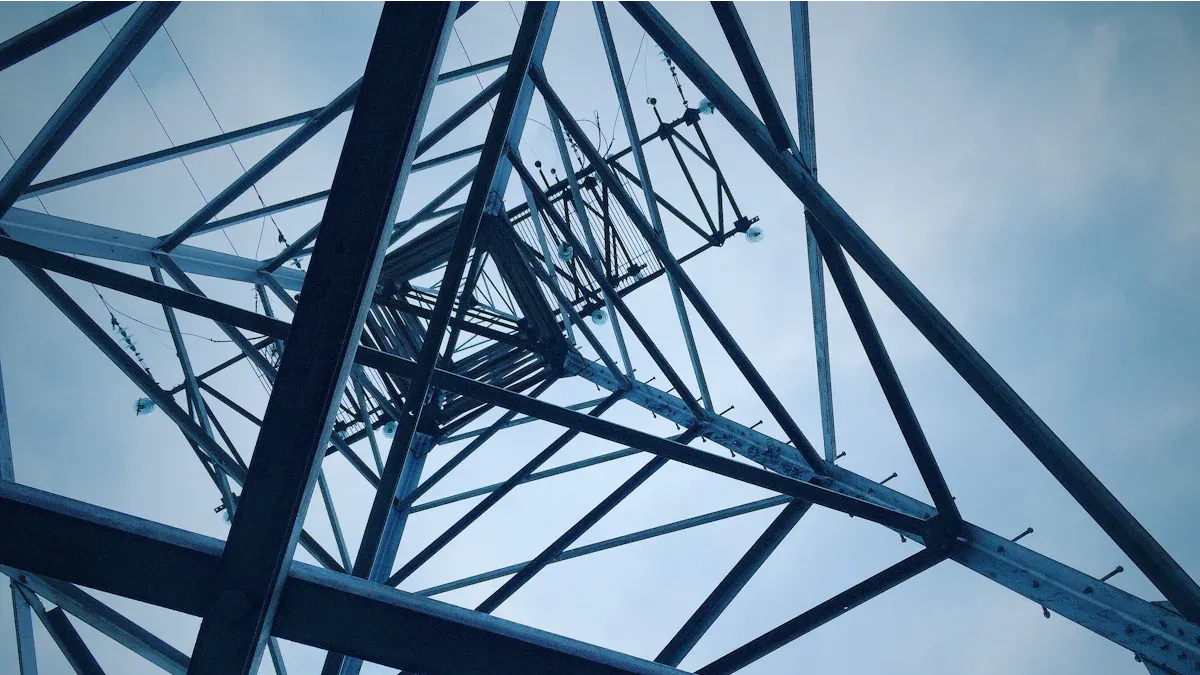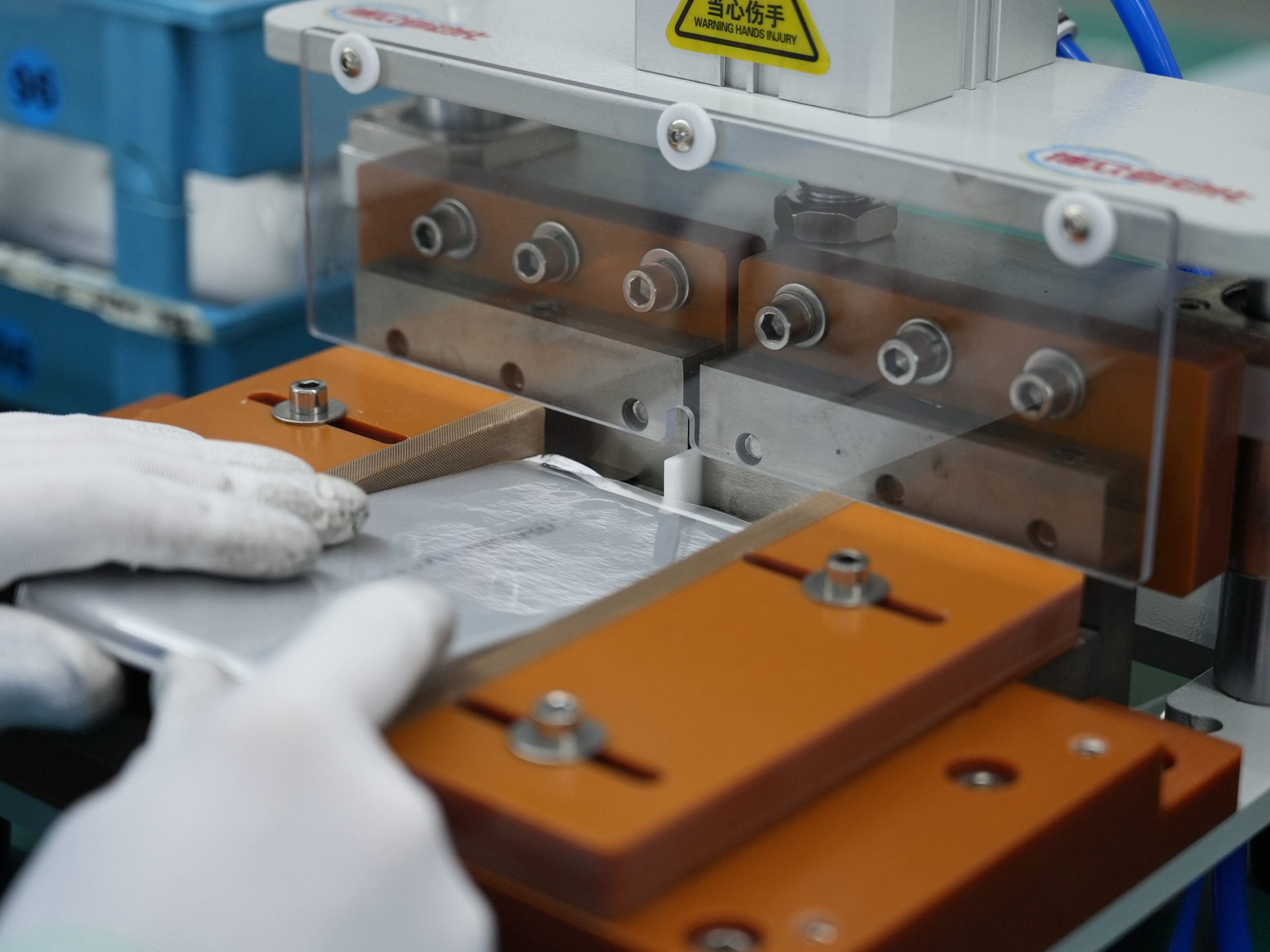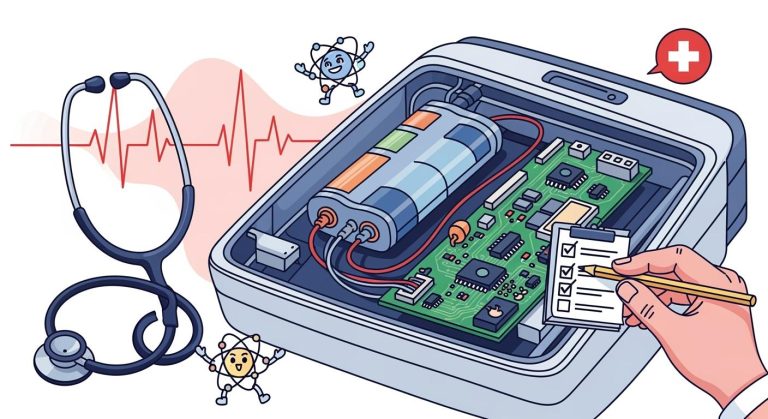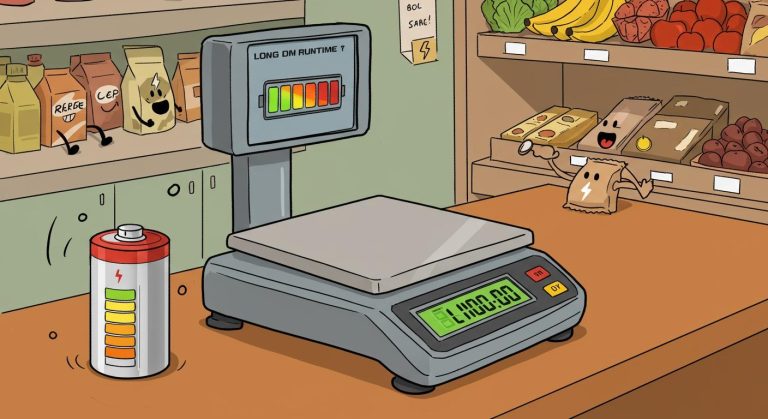
You face sudden darkness when a power outage strikes your facility. Emergency lighting batteries activate quickly, providing essential power for safety and compliance. Advanced lithium iron phosphate (LiFePO4) and high-temperature NiMH batteries deliver reliable power for your backup systems. LiFePO4 holds over 95% of its charge in standby, while NiMH retains 75-85% after a year. Both chemistries respond instantly to power demands and keep your facility prepared.
Battery Type | Standby Life | Instant Power Delivery |
|---|---|---|
LiFePO4 | Holds over 95% of charge in standby | Ideal for reliable power over extended periods |
NiMH | Holds 75-85% of charge after a year | Excels in high-drain applications |
Key Takeaways
Choose emergency lighting batteries that meet strict safety standards like UL 924 to ensure reliability during power outages.
Lithium Iron Phosphate (LiFePO4) batteries offer long lifespans and fast charging, making them ideal for emergency lighting systems.
Regular testing and maintenance of battery systems are crucial to prevent failures and ensure safety during emergencies.
Select battery types based on your facility’s needs, considering factors like temperature, humidity, and power demands.
Implement automated monitoring systems to track battery performance and detect issues early, ensuring reliable backup power.
Part1: Balancing Standby and Instant Power

1.1 Emergency Lighting Batteries: Dual Demands
You rely on emergency lighting batteries to deliver two critical functions. First, these batteries must remain ready for years, holding enough charge to activate instantly during a power outage. Second, they must provide reliable power for safe egress and compliance with building codes. Facilities such as hospitals, industrial plants, and security centers depend on this dual capability.
Tip: Always choose batteries that meet strict standards like UL 924 or EN 50171 to ensure safety and performance.
Here is a summary of the primary performance requirements for emergency lighting batteries:
Requirement | Description |
|---|---|
Long Standby Life | Batteries must maintain readiness for years with minimal maintenance. |
Instant Power Activation | Must provide reliable power during outages, ensuring safe egress. |
Compliance with Standards | Must meet strict safety and performance standards (e.g., UL 924, EN 50171). |
Illumination Duration | Deliver consistent illumination for at least 90 minutes as required by most building codes. |
Environmental Resistance | Designed to resist humidity and temperature swings. |
Maintenance-Free Options | Sealed lead-acid batteries eliminate the need for checking electrolyte levels. |
Cycle Life | Lithium-ion batteries offer 3,000+ charge cycles, exceeding lead-acid’s 300–500 cycles. |
1.2 Battery Chemistry and Power Delivery
You must understand how battery chemistry affects power delivery in emergency lighting batteries. The choice of chemistry impacts discharge rates, voltage stability, maintenance needs, and overall reliability.
Battery Chemistry | Platform Voltage | Energy Density (Wh/kg) | Cycle Life (cycles) | Discharge Characteristics | Voltage Behavior | Maintenance Needs |
|---|---|---|---|---|---|---|
LiFePO4 | 3.2 V | 90-120 | 2000-8000 | High discharge currents | Flat curve | Maintenance-free |
NMC | 3.7 V | 150-220 | 1000-2000 | High discharge rates | Moderate drop | Low |
LCO | 3.7 V | 150-200 | 500-1000 | Moderate discharge | Steep drop | Moderate |
LMO | 3.7 V | 100-150 | 300-700 | Moderate discharge | Steep drop | Moderate |
LTO | 2.4 V | 70-80 | 7000-20000 | High discharge rates | Flat curve | Maintenance-free |
NiMH | 1.2 V | 60-120 | 500-1000 | Good discharge rates | Gradual drop | Moderate |
Lead-acid | 2.0 V | 30-50 | 300-500 | Voltage sag during use | Significant drop | High |
LiFePO4 batteries provide high discharge rates and maintain stable voltage, making them ideal for high power applications in medical, robotics, and industrial infrastructure.
NMC batteries offer high energy density and moderate cycle life, suitable for consumer electronics and security systems.
LCO and LMO chemistries deliver moderate power but have shorter lifespans, often used in portable devices.
LTO batteries excel in cycle life and fast charging, making them valuable for critical backup in industrial and infrastructure settings.
NiMH batteries offer decent discharge rates but require more maintenance.
Lead-acid batteries experience voltage sag and need frequent checks, making them less suitable for modern emergency lighting batteries.
High-power density batteries deliver energy quickly, but this can reduce their energy storage capacity. Optimizing for high power output may restrict the battery’s ability to store significant energy. You must balance energy density and power output for practical applications. Rapid charging and discharging can shorten battery lifespan, but advanced battery management systems (BMS) and cooling technologies help reduce degradation.
Rechargeable batteries like LiFePO4 and NiMH are now standard in emergency lighting batteries. They offer reusability and reduce waste compared to disposable batteries. Quick recharge capabilities minimize downtime, ensuring your emergency lighting batteries are always ready for use.
1.3 Lithium Iron Phosphate (LiFePO4) Technology
LiFePO4 technology sets the benchmark for emergency lighting batteries. You benefit from a chemistry that delivers high power output, long cycle life, and exceptional safety. LiFePO4 batteries can last over 2,000 full charge-discharge cycles while retaining more than 80% of their original capacity. In emergency lighting applications, this translates to a service life of 10-15 years or more.
LiFePO4 batteries operate reliably at temperatures up to 60°C with minimal degradation.
They provide stable discharge down to -20°C, ensuring performance in cold environments.
At 100% Depth of Discharge (DoD): ≥3,000 cycles.
At 80% DoD: ≥6,000 cycles.
At 50% DoD: ≥8,000 cycles.
Note: LiFePO4 batteries have excellent thermal and chemical stability. They are non-combustible and can endure extreme conditions without risk of explosion or fire. Built-in protection against overcharging, over-discharging, and short circuits enhances safety in emergency lighting batteries.
LiFePO4 batteries reduce the risk of overheating and thermal runaway. Their stability is essential for preventing catastrophic fire or explosion risks in critical environments such as hospitals, industrial facilities, and security systems. Even under extreme conditions, such as overcharging or physical damage, the risk of explosion or combustion remains much lower than other lithium-ion chemistries.
You gain fast charging efficiency with LiFePO4 batteries. They operate at low current during short bursts, reducing the need for continuous charging compared to NiCd or NiMH batteries. The charging efficiency of LiFePO4 reaches around 95%, which enhances the readiness of emergency lighting batteries.
Part2: Safety and Compliance
2.1 Regulatory Standards
You must follow strict regulatory standards when designing emergency lighting systems for commercial and public buildings. These standards ensure that your battery energy storage systems deliver consistent power and maintain reliability during emergencies.
OSHA, National Fire Protection Association (NFPA), The Joint Commission, International Building Code, and International Fire Code set the foundation for compliance.
NFPA 70 (National Electrical Code) and NFPA 101 (Life Safety Code) guide the installation and operation of emergency lighting powered by battery energy storage systems.
International standards also play a vital role.
Standard | Description |
|---|---|
UL 924 | Establishes requirements for emergency lighting and power equipment, ensuring reliability during outages. |
EN 60598-2-22 | Specifies safety and performance criteria for emergency lighting fixtures, enhancing safety in various environments. |
IEC 60598-2-22 | Provides guidelines for the design and testing of emergency lighting systems, ensuring compliance with international safety standards. |
You must select lithium battery packs, such as LiFePO4, that meet these standards to guarantee power and reliability in your facility.
2.2 Risk of Battery Failure
Battery failure can compromise the safety of your building. You face several risks if your battery energy storage systems do not perform as expected.
The lights do not last through the entire test cycle.
The system indicates a battery fault.
Lights flicker or dim before turning off.
Common causes include battery age, inability to hold charge, and lack of maintenance. If you neglect maintenance, batteries may lose their charge, leaving your emergency lighting system without power.
Approximately 30% of emergency lighting systems failed to operate during emergencies due to poor maintenance or outdated technology.
Inadequate emergency lighting caused about 40% of injuries during evacuations in high-rise buildings.
You must monitor the lifespan of your battery energy storage systems and schedule regular inspections. This approach improves reliability and ensures that your power supply remains ready for emergencies.
Tip: Implement a proactive maintenance schedule to minimize the risk of failure during critical moments.
2.3 Backup Power Systems for Safety
Backup power systems provide essential support for emergency lighting. You can charge these systems through the grid or pair them with solar panels for renewable energy storage. UPS (Uninterruptible Power Supply) systems deliver instant power during outages, protecting sensitive electronics and critical systems.
Emergency lighting systems are crucial during power outages, providing necessary illumination for safe evacuation and hazard avoidance.
Lead-acid batteries offer reliability and cost-effectiveness, but lithium battery packs such as LiFePO4 deliver longer lifespan and higher power output.
You must ensure that your battery energy storage systems comply with UL 924 standards for regulatory approval. Designers should consider local building codes and standards, such as NFPA 110, when selecting the appropriate emergency power supply.
Proactive maintenance keeps safety measures in place and improves reliability.
Battery energy storage systems integrate with emergency lighting to enhance safety and compliance.
Note: Reliable backup power systems and regular maintenance protect your facility and support compliance with safety regulations.
Part3: Battery Energy Storage Systems
3.1 Types of Emergency Lighting Batteries
You have several battery options for emergency lighting systems. Each type offers unique advantages and disadvantages for power delivery and runtime. The table below compares the most common battery chemistries used in emergency lighting:
Battery Type | Advantages | Disadvantages |
|---|---|---|
Lead Acid | Lower cost, strong resistance to heat and cold, reliable power output | Large size, heavy, must stay upright, sensitive to deep cycling, shorter runtime |
Nickel-Cadmium (NiCd) | Compact, lightweight, flexible orientation, long life, stable power | Higher cost, needs periodic full discharge, memory effect, moderate runtime |
Lithium Iron Phosphate (LiFePO4) | High energy efficiency, low self-discharge, fast charging, long life, excellent power and runtime in extreme temperatures | Higher initial cost, but no major disadvantages for emergency lighting |
You should select the battery chemistry that matches your facility’s power and runtime needs. LiFePO4 batteries deliver the best balance of long runtime, high power, and low maintenance, making them ideal for modern emergency lighting systems.
3.2 Lifespan and Reliability
Battery lifespan and reliability directly impact your operational costs and system performance. LiFePO4 batteries provide a lifespan of 8–10 years, while NiCd and NiMH batteries usually last 3–4 years. The table below summarizes average lifespans:
Battery Chemistry | Average Lifespan |
|---|---|
Lithium Iron Phosphate (LiFePO4) | 8-10 years |
Nickel-Cadmium (NiCd) | 3-4 years |
Nickel-Metal Hydride (NiMH) | 3-4 years |
You benefit from longer runtime and fewer replacements with LiFePO4 batteries. These batteries maintain stable power output over thousands of cycles. NiCd and NiMH batteries lose runtime and power capacity more quickly with each cycle. Lithium batteries also avoid liquid leaks, which improves safety and reduces maintenance disruptions. Reliable power ensures your emergency lighting system operates during every outage, minimizing risks and lowering long-term costs.
LiFePO4 batteries last 8–10 years, reducing replacement frequency.
NiCd and NiMH batteries require more frequent maintenance and replacement.
Lithium batteries provide 1.5–2 times the cycle life of lead-acid or NiMH batteries, lowering your total cost of ownership.
3.3 Fast Charging and Maintenance-Free Operation
Fast charging technology keeps your emergency lighting system ready for any emergency. LiFePO4 batteries support rapid charging, ensuring full power and runtime availability after each test or outage. You avoid long downtimes and keep your facility compliant with safety codes.
Fast charging in lithium-ion batteries guarantees your system always has enough power for immediate deployment.
LiFePO4 batteries offer longer runtime and lifespan than NiCd or NiMH, so you replace them less often.
Maintenance-free battery systems cost more upfront, but you save on labor and replacement costs over time.
These systems require less manual intervention, ensuring uninterrupted power and runtime during outages.
Tip: Choose maintenance-free lithium battery packs to reduce manual resets and ensure compliance with building codes and fire regulations.
You gain peace of mind knowing your emergency lighting system will deliver reliable power and runtime when you need it most.
Part4: Installation and Maintenance

4.1 Proper Setup for Power Reliability
You must install emergency lighting systems with precision to maximize power and ensure safety and reliability. Proper setup starts with choosing LED fixtures, which offer long life and energy efficiency. You should consider a central UPS system for reliable backup power, as it simplifies maintenance and reduces costs compared to multiple units. The table below highlights best practices for installation:
Best Practice | Description |
|---|---|
Use LED fixtures | LEDs last up to 50,000 hours and help size battery backup systems for optimal power performance. |
Central UPS system | Centralized systems provide reliable backup power and streamline maintenance. |
Regular testing and maintenance | Testing ensures each fixture meets power and voltage requirements during outages. |
Installation errors can compromise safety and reliability. You must avoid common pitfalls:
Improper placement near egress routes reduces visibility and power coverage.
Inadequate mounting height can obstruct signs, violating safety codes.
Insufficient quantity of signs leads to confusion during evacuation.
Non-compliant signage materials may fail, risking reliable backup power.
Neglecting battery backup systems verification results in non-functional lighting.
Failing to account for obstructions leaves areas in shadow, reducing power effectiveness.
Inconsistent light levels and improper aiming lower performance.
Lack of coverage in storage rooms or non-obvious areas threatens safety and reliability.
Tip: Always verify battery backup systems during installation to guarantee reliable backup power and consistent performance.
4.2 Routine Testing
Routine testing ensures your emergency lighting delivers reliable backup power and meets safety and reliability standards. You should follow a structured schedule:
Monthly testing: Inspect emergency lights visually and activate them for at least 30 seconds to confirm power and battery backup systems functionality.
Annual testing: Run a full-duration test for at least one hour. Check battery backup systems for wear and replace batteries if needed.
Regular testing improves performance and compliance. Inspections help you identify issues early, such as voltage drops or reduced power output. You maintain reliable backup power and avoid unexpected failures during emergencies.
Note: Neglecting routine testing can lead to undetected malfunctions, reducing safety and reliability when you need power most.
4.3 Monitoring Battery Lifespan
Monitoring battery lifespan is essential for maintaining reliable backup power and optimal performance. You can use several methods:
Method | Description |
|---|---|
Routine Testing | Detects wear and reduced power capacity before failures occur. |
Automated Monitoring Systems | Tracks real-time data, alerting you to voltage drops or overheating in battery backup systems. |
Predictive Maintenance | Uses analytics to spot anomalies, enabling early intervention and ensuring reliable backup power. |
Predictive maintenance technologies provide real-time monitoring of battery backup systems. You receive early warnings before performance drops, allowing you to plan replacements and maintain reliable backup power. This proactive approach reduces the risk of unexpected failures and keeps your emergency lighting system ready for any power outage.
Tip: Implement automated monitoring and predictive maintenance to maximize battery backup systems lifespan and ensure safety and reliability.
Part5: Choosing the Right Solution
5.1 Selecting Emergency Lighting Batteries
You must select emergency lighting batteries that match your building’s needs and operating environment. Consider how your facility handles high temperatures, humidity, and frequent power outages. You need batteries that maintain a full charge and deliver instant power when the emergency power supply activates. Choose batteries with long lifespans to reduce replacement costs and maintenance. High-quality, certified batteries ensure safety and reliability for your backup power supply. Maintenance-free options increase efficiency and simplify management.
Battery Operating Environment: Adapt to heat, humidity, and industrial conditions.
Battery Charging Performance: Maintain full charge for reliable power during outages.
Battery Lifespan: Longer life means fewer replacements and lower costs.
Battery Quality and Certification: Certified batteries guarantee safety and reliability.
Battery Management and Maintenance: Maintenance-free batteries improve efficiency and flexibility.
You can select from several battery types for different industries:
Lead-acid batteries: Cost-effective for general-purpose emergency power supply.
NiCd batteries: Suitable for industrial sites needing long life and temperature resistance.
NiMH batteries: Ideal for portable systems with limited space.
Li-Ion batteries (LiFePO4, NMC, LCO, LMO, LTO): Best for high-end systems requiring high energy density, efficiency, and lightweight design.
5.2 Cost vs. Performance
You must balance cost and performance when choosing an emergency power supply. Centralized systems work best for large projects, offering high fixture counts and lower maintenance costs. Unit batteries suit smaller projects where labor costs matter most. Performance affects lumen output and maintenance, which are critical for compliance and safety.
Battery Type | Initial Cost | Lifespan | Efficiency | Flexibility | Application Scenario |
|---|---|---|---|---|---|
Lead-acid | Low | 3-5 yrs | Moderate | Low | Warehouses, offices |
NiCd | Medium | 5-7 yrs | Moderate | Medium | Factories, plants |
NiMH | Medium | 3-4 yrs | Moderate | High | Portable units |
LiFePO4 | High | 8-10 yrs | High | High | Hospitals, data centers |
NMC | High | 5-8 yrs | High | High | Security systems |
LCO/LMO/LTO | High | 5-10 yrs | High | High | Specialized equipment |
Centralized emergency power supply systems provide full rated output for the required duration. Unit batteries must balance performance ratios to meet safety codes. Compliance with NFPA 101 remains essential for every installation.
Tip: Evaluate both upfront costs and long-term efficiency to maximize flexibility and reliability in your backup power supply.
5.3 Eco-Friendly LED Options
You can improve sustainability by choosing eco-friendly LED emergency lighting solutions with advanced lithium battery packs. LED fixtures paired with LiFePO4 batteries reduce your carbon footprint compared to traditional lead-acid batteries. Lithium batteries use non-toxic materials and offer high recyclability, minimizing waste and raw material extraction. Their production process uses less energy and emits fewer greenhouse gases, supporting climate goals.
LiFePO4 batteries provide superior thermal and chemical stability, lowering the risk of overheating and fire hazards. You benefit from over 2,000 charge-discharge cycles without significant degradation, which means fewer replacements and less environmental impact. These features increase efficiency and flexibility for your emergency power supply while supporting your company’s sustainability initiatives.
Note: Eco-friendly LED systems with lithium battery packs deliver reliable power, high efficiency, and flexibility for modern emergency lighting needs.
You need emergency lighting batteries that balance long standby life with instant power. Advanced lithium battery packs, such as LiFePO4, NMC, LCO, LMO, and LTO, deliver reliable power when your facility faces outages. Upgrading to advanced battery energy storage systems improves safety and compliance in several ways:
Rigorous inspection protocols ensure your power supply remains dependable.
Advanced monitoring technologies help you detect power issues before they become critical.
Adherence to regulatory standards reduces fire risks and keeps your power systems compliant.
Regular maintenance and testing keep your power ready for emergencies. You should review your backup power systems and consider upgrades to maintain safety and meet compliance standards.
FAQ
What makes lithium battery packs ideal for emergency backup power systems?
Lithium battery packs, such as LiFePO4, NMC, LCO, LMO, and LTO, deliver reliable standby supply and immediate response. You gain long cycle life, stable power output, and enhanced safety for critical applications. These systems support backup power applications in demanding environments.
How do emergency lighting systems ensure immediate response during power outages?
Emergency lighting systems use advanced lithium battery packs to maintain standby readiness. When power outages occur, these systems activate instantly, providing backup supply for safe egress. You benefit from immediate response applications that protect safety and maintain compliance.
Why is routine testing important for backup power systems in critical environments?
Routine testing helps you verify standby supply and backup power reliability. You detect issues before emergencies arise. Regular inspections ensure systems deliver consistent response during outages, supporting safety and energy reliability for critical systems.
What factors affect the lifespan of lithium battery packs in backup power applications?
Temperature, charge cycles, and maintenance impact lithium battery pack lifespan. You should monitor systems for voltage drops and schedule replacements as needed. Proper care ensures reliable backup supply and immediate response for emergency systems during power outages.
How do you select the right lithium battery chemistry for emergency backup power systems?
You must assess your facility’s standby needs, response requirements, and operating conditions. LiFePO4 offers long life and safety, while NMC and LTO provide high power for critical systems. Choose chemistry that matches your backup power supply and emergency response goals.






